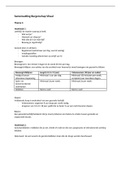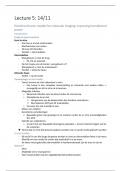Summary
Summary of OCR AS-Level Biology
- Module
- Full Course
- Institution
- OCR
Everything you'll need for OCR A-Level Biology: -All course content -Key equations and their application -All practical methods and results -Diagrams and graphical technique -Exam tips on how to answer each question
[Show more]












